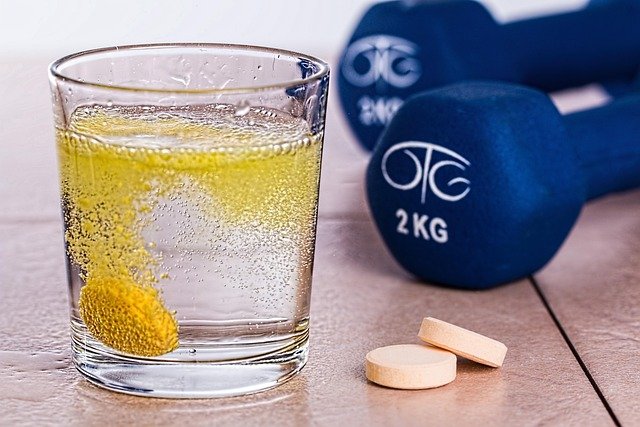Sleep, diet, and activity: combined factors in skin regeneration
Skin regeneration is influenced by a combination of sleep patterns, dietary choices, and physical activity. Understanding how these elements interact helps you support repair processes, maintain barrier function, and manage inflammation for healthier-looking skin over time.

Skin regeneration depends on coordinated biological processes that respond to what you eat, how you move, and how well you rest. Cells responsible for repair—keratinocytes, fibroblasts, and immune cells—use nutrients, oxygen, and hormonal signals to rebuild collagen, renew the epidermis, and control inflammation. Managing sleep, nutrition, and physical activity together creates an environment where recovery is efficient and skin resilience improves. This article explains the roles of nutrition, sleep, hydration, protein, recovery, exercise, micronutrients, inflammation, and wellness in skin repair.
This article is for informational purposes only and should not be considered medical advice. Please consult a qualified healthcare professional for personalized guidance and treatment.
How does nutrition affect skin regeneration?
Nutrition supplies the raw materials and cofactors needed for skin repair. Dietary protein provides amino acids for collagen and elastin synthesis; healthy fats support membrane integrity and lipid barrier formation; and carbohydrates supply energy for cell proliferation. A diet that includes varied sources of protein, unsaturated fats, and whole grains also supports microbiome balance and hormonal stability. Including antioxidant-rich foods helps the skin neutralize oxidative stress, which otherwise slows cellular turnover and may degrade collagen over time.
How does sleep support skin repair?
Sleep is a key window for repair: growth hormone secretion, reduced cortisol levels, and cellular energy reallocation occur during deep sleep stages. These changes promote protein synthesis and tissue remodeling, making sleep duration and quality directly relevant to regeneration. Poor sleep is associated with impaired barrier recovery, increased inflammation, and visible signs such as dullness or fine lines. Prioritizing consistent sleep timing and habits supports the circadian regulation of skin cell proliferation and immune responses.
Why is hydration essential for skin health?
Hydration affects both the outer barrier and deeper tissue repair. Adequate systemic hydration assists nutrient delivery and waste removal at the cellular level, while topical hydration maintains stratum corneum flexibility and barrier integrity. Dehydration can increase transepidermal water loss and slow the migration of repair cells. Drinking fluids, consuming water-rich foods, and using appropriate moisturizers can reduce mechanical stress on regenerating skin and support optimal cellular function.
How do protein and recovery aid tissue repair?
Protein intake and recovery strategies go hand in hand for rebuilding skin structures. Amino acids like glycine, proline, and lysine are central to collagen formation; insufficient protein intake slows matrix synthesis and prolongs healing. Recovery practices—adequate rest, reduced oxidative load, and phased exercise—allow protein-synthesis pathways to function effectively. Timing protein intake around periods of activity or healing can provide substrates when demand is highest and contribute to consistent regeneration.
How does exercise and endurance influence skin?
Moderate exercise enhances circulation, which improves oxygen and nutrient delivery to skin cells and assists removal of metabolic byproducts. Regular activity can also modulate systemic inflammation and improve insulin sensitivity—factors that indirectly influence repair and collagen maintenance. Endurance training has benefits but should be balanced with recovery: excessive or prolonged high-intensity exercise without adequate nutrition and rest can increase oxidative stress and impair barrier repair. Tailored activity supports wellness and regenerative capacity.
How do micronutrients and inflammation interact?
Micronutrients—vitamins A, C, D, E, zinc, iron, and selenium—act as cofactors in enzymatic reactions crucial for collagen cross-linking, antioxidant defense, and immune regulation. Deficiencies can slow wound healing, weaken the barrier, and increase susceptibility to inflammatory conditions. Chronic low-grade inflammation interferes with normal regeneration by altering signaling pathways and degrading extracellular matrix components. Addressing micronutrient status and strategies to manage inflammation (dietary patterns, sleep, stress reduction) helps optimize repair mechanisms.
Conclusion
Effective skin regeneration is multifactorial: nutrition provides building blocks and cofactors, sleep enables hormonal and cellular repair cycles, hydration supports cellular environment, protein fuels matrix production, and appropriate exercise enhances circulation while endurance and recovery balance systemic stress. Micronutrients and inflammation shape the pace and quality of repair. Considering these factors together—rather than in isolation—creates a more reliable foundation for healthier, more resilient skin over time.





